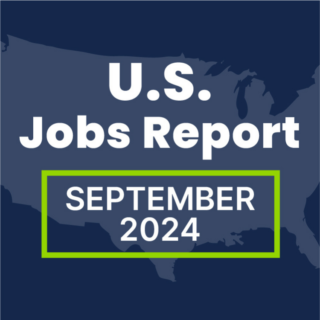Workforce analytics are changing the game. To stay competitive in the modern and complex business landscape, organizations need to leverage technology to make more strategic decisions. Many are using big data and analytics to achieve these aims. In fact, 80 percent of executives say their big data investments have been successful, and almost half say their organizations can measure the benefits from their projects.
What’s more, according to Harvard Business Review, organizations that excel in data-driven decision-making are more productive and more profitable than their competitors on average.
Workforce analytics combines statistical analysis and predictive modeling to help organizations make fact-based talent acquisition and management decisions. In this post, we outline how to leverage analytics as part of the workforce planning process.
What is Workforce Planning and What Role do Analytics Play in the Process?

Traditionally, workforce planning has been a reactive way of assessing workforce needs. Organizations typically make annual talent forecasts for how many hires are needed in a role, and those estimates happen before the end of a fiscal year as part of the budget-planning process. This approach to workforce planning lacks the flexibility needed to remain agile and competitive in an evolving and dynamic labor market.
Modern, data-driven workforce planning focuses on the future by assessing current hiring needs and modeling how those needs will evolve. Workforce analytics is the cornerstone of modern workforce planning.
Workforce analytics gathers and analyzes data to better inform decisions made in of the process of workforce planning, resulting in the formation of a strategic plan to address workforce challenges. This data-focused approach can assist organizations to match talent forecasts with analysis of the talent pool to create a realistic view of the labor market.
When workforce planning is combined with workforce analytics, organizations are better able to predict future leaders within the organization, craft succession plans for critical positions and recruit the right talent.
Types of Workforce Analytics
Data analytics has become common across many business functions, from logistics to finance. As organizations look to overcome the skills gap, full-employment and record retirement, they need to develop a systematic process for identifying workforce needs, develop strategies to meet those requirements and implementing them effectively. Below we list three data analytics techniques essential to workforce planning that can help organizations meet changing demands now and in the future.
Predictive Analytics
Predictive analytics leverages historical data to create predictive models that anticipate what is likely to happen in areas such as employee turnover, skills shortages and shifts in the labor market. By incorporating predictive analytics into workforce planning, techniques such as regression analysis, forecasting, multivariate statistics and pattern matching enable an organization’s leadership to understand likely talent outcomes and needs of the future.
Diagnostic Analytics
Diagnostic analytics helps contextualize past performance by evaluating performance-based metrics in an attempt to discover the reasons behind past workforce successes or failures. Diagnostic analytics is essential in workforce planning because it can provide organizations with a clearer picture of key workforce performance metrics and trends. The data can then be leveraged to identify unseen workforce performance issues. Armed with insights gleaned from diagnostic analytics organizations can better optimize their workforce plan to align with performance goals.
Prescriptive Analytics
Similar to predictive analytics, prescriptive analytics uses the same sets of historical workforce data to anticipate the likelihood of specific results or events. What makes prescriptive analytics different is that the data is then leveraged to plan the best next actions based on those predictions. Prescriptive analytics is extremely valuable in workforce planning because it uses available data to recommend measures that could increase the likelihood of desired business and staffing outcomes occurring.
These techniques can provide organizations with concrete and actionable insights on workforce data and help drive better talent strategies. Talent technology solutions such as PeopleScout’s propriety technology, Affinixtm, can help organizations better leverage these techniques and deliver additional value to workforce planning.
Benefits of Workforce Analytics
While the most obvious benefits are related to time savings, dollars saved and earned, percentage changes, and proof of ROI, there are less tangible benefits of workforce analytics that HR leaders often discover after they have started with their solution. These are benefits related to organizational alignment, team cohesion and company culture. While these benefits are more difficult to measure in concrete terms, they are definitely connected to business outcomes. In the following section, we outline two ways workforce analytics can improve and organizations talent management and recruiting programs.
Improving Retention and Employee Performance
Detailed analytics can help organizations identify top performers, foster successful employee retention and talent recruitment programs and ensure the proper workforce is in place to accomplish business goals and objectives.
Furthermore, an employee’s performance data could be used by hiring managers to identify what motivates an organization’s top talents. This data not only provides more insights about the employees but also shape the strategies to boost the employee morale, retention and engagement.
Improved Hiring Decision With
Workforce analytics make predictive analysis easier and helps HR to make a better choice based on historical data. A great HR analytics tool can make the difference by making the HR easily derive the best candidate to hire from the historical data.
For example, if an organization hired 20 candidates and 10 out of them are from a particular background failed at it, organizations can avoid hiring candidates from a similar background. Moreover, workforce analytics also allows recruiters to learn more about candidates through an online resume database, applications, social media profiles to learn which traits and attributes are associated with top performers in a certain role.
Conclusion
Today, HR leaders make use of analytics solutions to realize deeper insight into the workforce in order to fuel evidence-based decisions and improve business outcomes. An experienced RPO partner with a consultative approach can help organizations better understand their workforce and tailor talent acquisition strategies to match the client’s goals and objectives and which metrics can best determine the desired impact.




